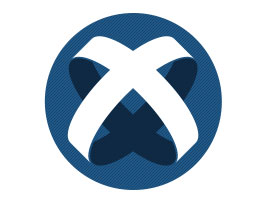
Appcelerator Titanium
An Introduction
Nic Jansma | nicj.net | @NicJ
Titanium
- Titanium is a cross-platform development environment where you can build iOS, Android, BlackBerry and Hybrid/HTML5 apps
- Titanium apps are written in JavaScript
- Your JavaScript interfaces with native controls through an abstraction layer (you're not building a webpage)
- Titanium features an Eclipse-based IDE called Titanium Studio
- Titanium has a MVC framework called Alloy, and Appcelerator offers Cloud Services to help bootstrap your app
- Titanium is free and open-source
iOS and Android Development
- With Android, you write native apps in Java
- With iOS, you write native apps in Objective-C
- With Titanium, you write cross-platform apps in JavaScript, that run on Android, iOS and other platforms
How it Works
- You write code in JavaScript
- Your JavaScript code is minified and optimized during the build process, but still evaluated as JavaScript at runtime on the platform
- At runtime, your application has 3 major components:
- JavaScript source code
- Titanium API implementation in the native OS
- JavaScript interpreter: V8 (Android) or JavaScriptCore (iOS)
How it Works
- The JavaScript interpreter runs your JavaScript code in an environment with proxies for the native objects (windows, controls, etc)
Ti.UI.createTextField()creates aUITextViewon iOS and aTextViewon Android- You are not creating a webpage with HTML and CSS (which is how PhoneGap works): you build UI through code or the Alloy MVC framework
Getting Started
Create a Free Developer Account
https://my.appcelerator.com/auth/signup
The Developer account is free. You can build, test and deploy to the app stores with the free account.
There is an Enterprise plan that provides a SLA, analytics, more cloud, support, training and more.
Titanium Studio
Download Titanium Studio for free here:
http://www.appcelerator.com/titanium/download-titanium/
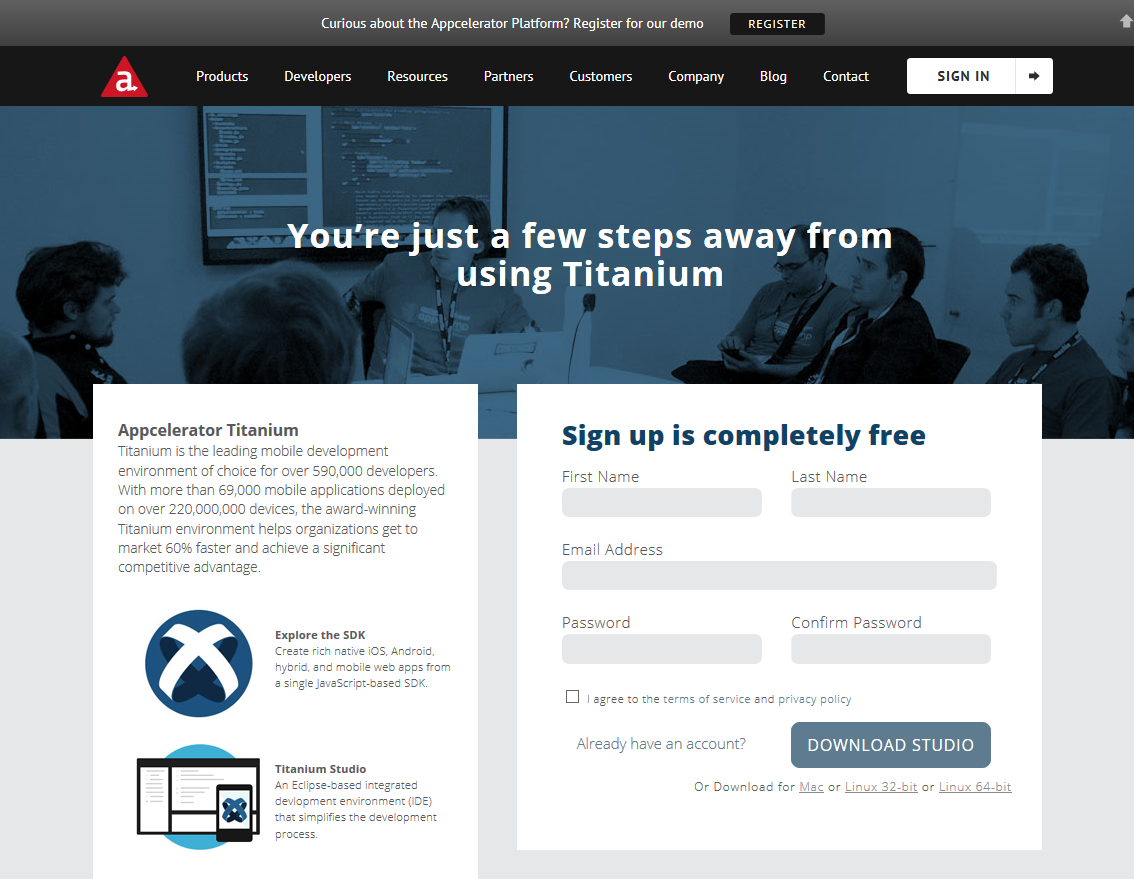
Works on Mac, Windows and Linux
Titanium Studio
(based on Eclipse)
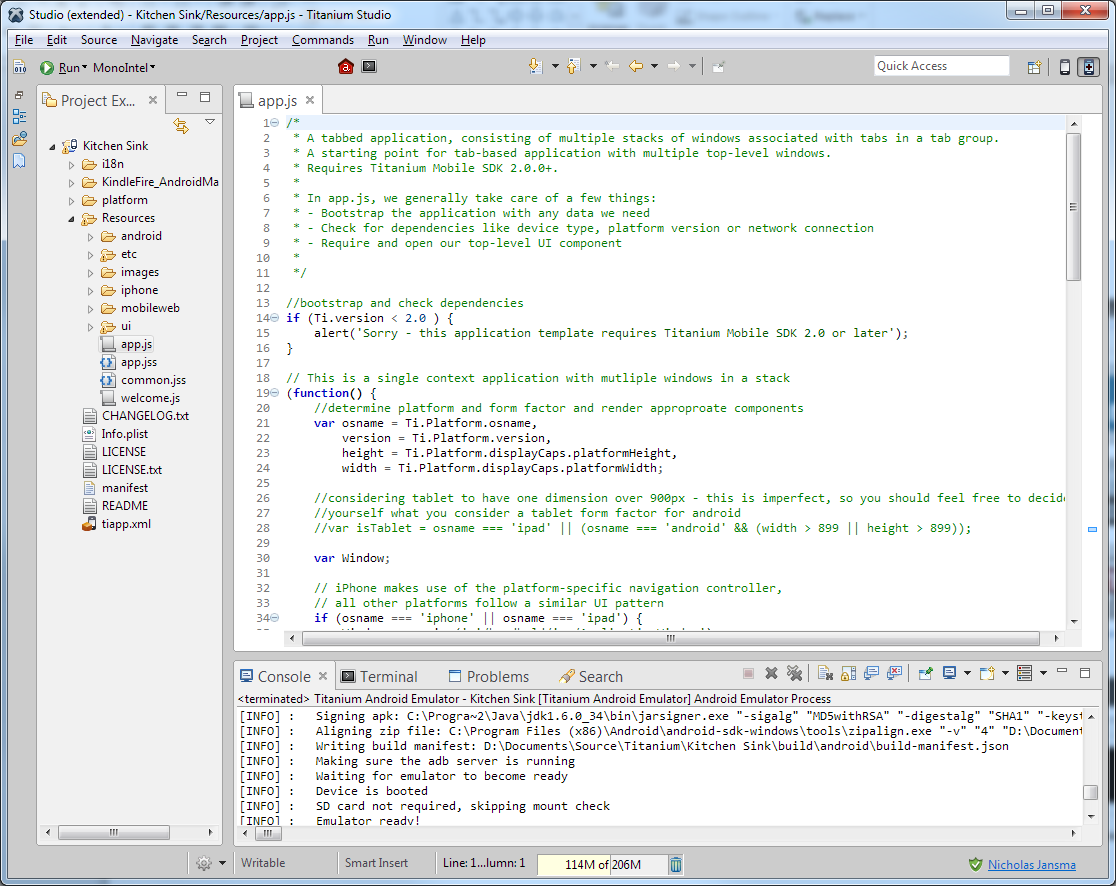
Code Samples
Get the "Kitchen Sink" sample from Dashboard | Develop, which has code demos for how to use all of the controls:
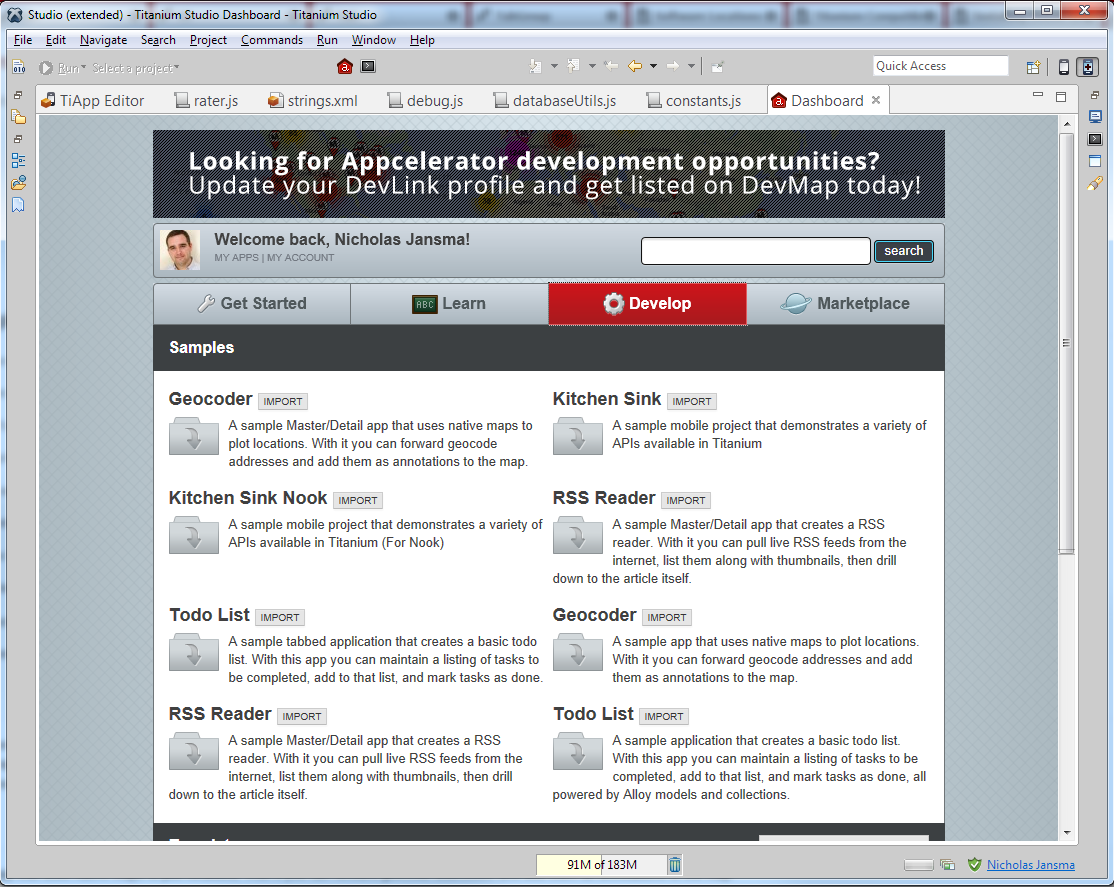
Kitchen Sink
Code samples for how to access all of the platform's native controls through the Titanium APIs (Ti.*)
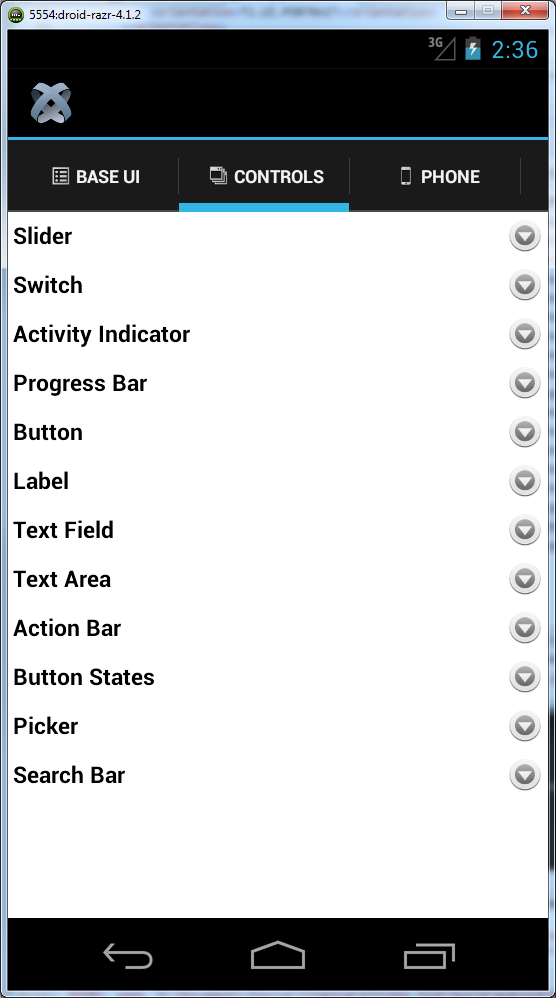
Creating a new Project
File | New | Mobile App Project
Alloy will use their MVC framework
Classic lets you build your own UI

Project Structure (Classic Project)

i18n/: Internationalizationmodules/: Native modulesplatform/: iOS/Android specific-
Resources: Core project codeapp.js: Startup fileandroid/andiphone/: Platform imageslib/,ui/,whatever/: Your code
App Startup
var win = Ti.UI.createWindow({
title: 'Hello, World!',
layout: 'vertical',
backgroundColor: 'white'
});
var helloLabel = Ti.UI.createLabel({
text: 'Hello World',
color: 'black',
font: { fontSize: '20sp' },
height: '40dp',
width: '250dp'
});
win.add(helloLabel);
var helloButton = Ti.UI.createButton({
title: 'Click me!',
font: { fontSize: '20sp' },
top: '20dp',
height: '40dp',
width: '250dp'
});
helloButton.addEventListener('click', function() {
alert('you clicked me!');
});
win.add(helloButton);
win.open();
Demo
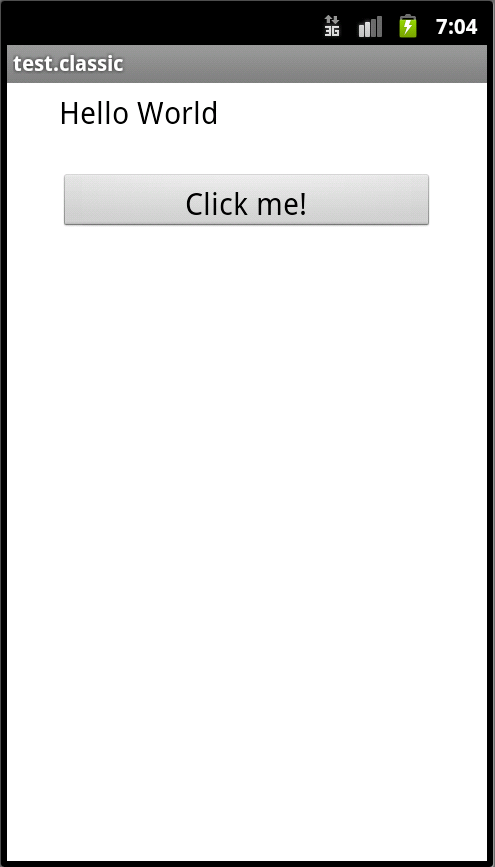
Demo
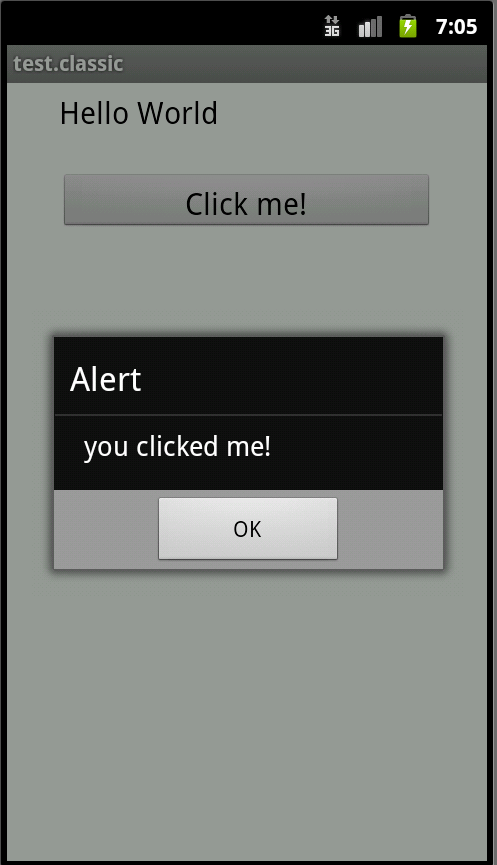
Alloy
- Alloy is an open-source model-video-controller (MVC) framework for Titanium
- Alloy provides a simple model for separating your user interface, business logic and data models
- Alloy uses XML and CSS to create and style your views
- Alloy is fully integrated into Titanium Studio
Getting Started
First, install Alloy via Node.js's NPM:
sudo npm install -g alloy

Code
app/views/index.html:
<Alloy>
<Window class="container">
<Label id="label">Hello World</Label>
<Button id="button" onClick="doClick">Click me!</Button>
</Window>
</Alloy>
app/controllers/index.js:
function doClick(e) {
alert('you clicked me!');
}
$.index.open();
app/styles/index.tss:
".container": {
backgroundColor:"white"
},
"#label": {
top: 20,
width: Ti.UI.SIZE,
height: Ti.UI.SIZE,
color: "#000"
}
Demo

Titanium Mobile APIs
- AJAX / web services
- In-App Purchases
- Geolocation
- Camera
- Calendar, Contact
- Media, Photo Gallery
- Gestures, Accelerometer
- Maps
- Analytics
- Social Sharing (Facebook, Yahoo, etc)
- Extensible with your own native iOS/Android packages
Pros
- One codebase for two+ platforms
- You'll (theoretically) spend less time than if you write two native apps
- Maintenance on one codebase should be easier in the long run
- Native interface controls: your app looks native, not like web controls
- Might be able to reuse your JavaScript in other parts of your project
Pros
- JavaScript is great for rapid prototyping, and works really well with Titanium
- Titanium is open-source: github.com/appcelerator/titanium_mobile
- The platform is starting to mature and stabilize
- SDK and API documentation, tutorials and samples have improved dramatically over the last year
Cons
- Need to learn a new platform / SDK / quirks
- Knowing the ins & outs of native iOS / Android will help
- You'll still have lots of
if(iOS){}andif(android){} - Performance isn't 100% of a native app (but better than running in a web control)
- Q&A support forum is a mess (use StackOverflow instead)
Unofficial LEGO Minifigure Catalog
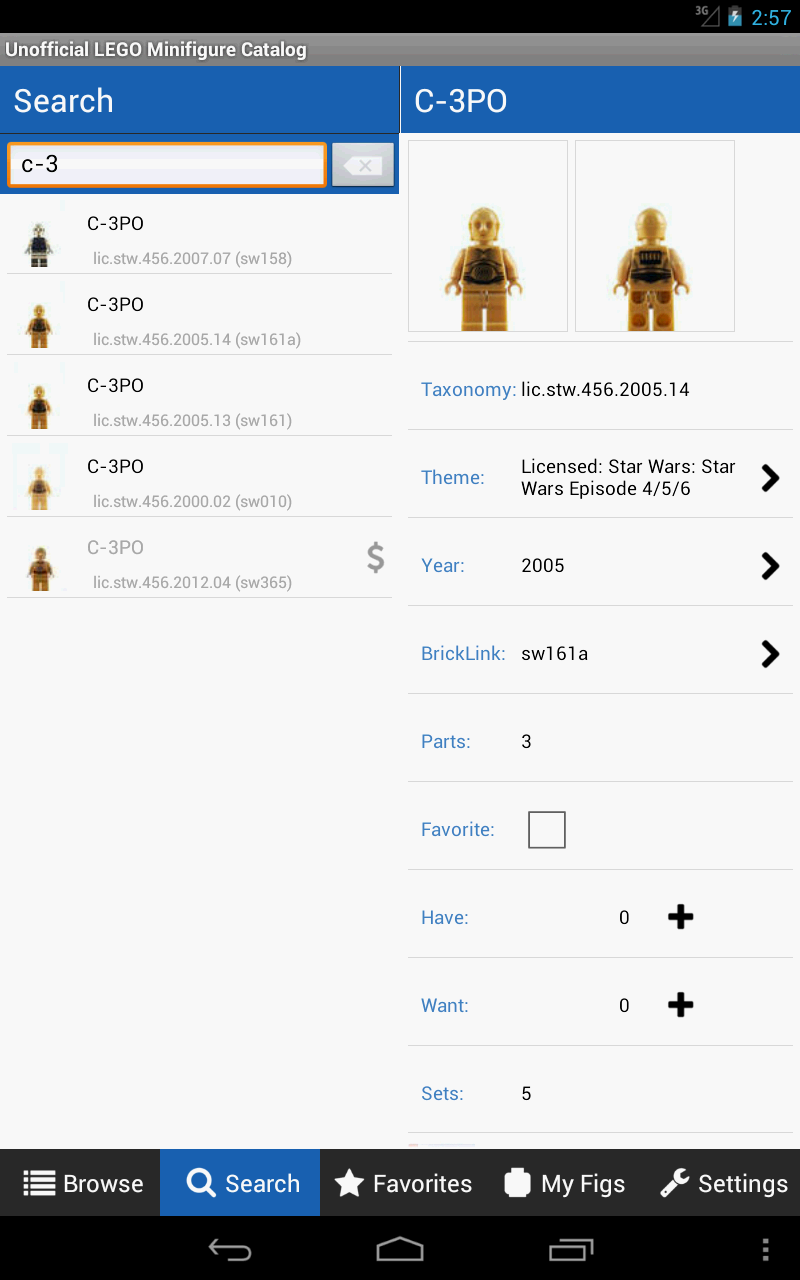
Unofficial LEGO Minifigure Catalog
- Took ~1 month to develop
- minifigure.org/application
- Releasing content updates via In-App Purchases
- Got featured in iTunes Catalogs category for a week
- Looking back, Titanium was the right choice for our product's needs
Lessons Learned
- I probably spent as much time learning Titanium and building my first app as I would have
spent learning native iOS (I had already written native Android apps)
- Now I can build apps in Titanium quickly
- 2nd, 3rd and 4th Titanium apps have been a lot faster
- It takes time to ramp-up on good JavaScript patterns: CommonJS modules, Crockford-isms, etc
- iOS simulator is a lot faster to test on. For Android, use Intel x86 images!
- For community support, you'll need to use a combination of the Appcelerator API Docs, Q&A site, videos and StackOverflow
Lessons Learned
- You won't double your sales just by releasing on both platforms
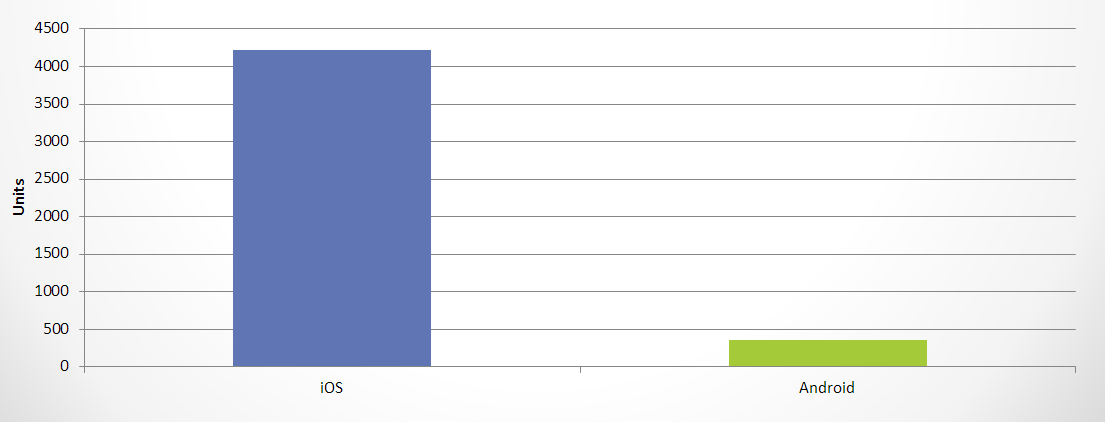
Links
- Appcelerator: appcelerator.com
- Alloy MVC: appcelerator.com/platform/alloy/
- Titanium Studio: appcelerator.com/titanium/titanium-studio/
- Code samples: docs.appcelerator.com/titanium/3.0/#!/guide/Titanium_Samples
- Videos: vimeo.com/appcelerator
- This Presentation: slideshare.net/nicjansma
- Code: github.com/nicjansma/talks/